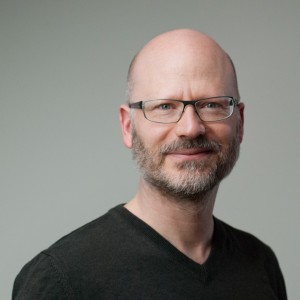My name is Andy Polaine and I'm a Service and Experience Design consultant, educator and writer (I co-authored Service Design). I work with my own clients, but most of my time is currently spent researching and teaching Service Design at the Hochschule Luzern in Switzerland on the MA Design and BA Design Management International there. As of September I will be working at Fjord across Europe and moving to Sydney in January to be a Service Design Director at Fjord in Australia and also running the APAC part of their Service Design Academy.
How did you get started in interaction design? What is a turning point in your professional career?
When I started back in the very early 90s it didn't exist. I went to university to study film and planned to try and become a film director. But I got introduced to Macs (I wrote my first essay on a Mac Classic!) and some of the early tools. I started working with Photoshop 2.0 on Mac LC IIs. We saved everything on floppy discs, so we could only work in black and white because colour files were too large. One day, our very influential lecturer, Andy Cameron, brought in a copy of Macromind Director, just after it had changed names from Mediaworks. That was a turning point for us, because it meant a bunch of non-programmers like us could make interactive works. We spent the rest of the time experimenting and discovering the medium. Some of this resulted in the Antirom CD-ROM. The discovery is still ongoing.
What is your ideal workplace?
One that doesn’t feel like a workplace. I don't mean that it has to have a swing and a chalet area, but I don't think workspaces should equate to boring spaces. I never understand why corporate environments are so dull. It's not like it's a special deal for designers to have "creative spaces." Nobody would decorate their own homes in the same manner as those grey corporate spaces, so why work in it? You spend more time there than at home. For me the most important thing is flexible and zoned spaces. You need somewhere comfortable to retreat to, but you also need big collaborative spaces with lots of wall space to throw stuff up onto. You need spaces where you can sit/stand and type. And you need a good communal eating space and kitchen. That often gets forgotten.
What interaction design tools / software do you use for your work?
I can't believe I'm saying this, but most of my work is strategic input these days, so I don't get to do much visual design and I was never a great visual designer. I write a lot and when I can, I write in Markdown, mostly in Byword, and export it where and how I need with Marked. I use Keynote a lot, not just for presentations, but also for mocking up interactive prototypes and sometimes for diagrams. I have the whole Adobe suite on my machine, but I try to avoid opening it as much as possible. It's so slow and bloated. My favourite Adobe app after Lightroom is InDesign – it's useful for diagramming and wireframing too, but I use Keynote for a lot of that now too. I used to use Omnigraffle a lot, but have less need now. I prefer smaller apps like Pixelmator for image editing over Photoshop. Pixelmator reminds me of Photoshop before it got so heavy.
And what hardware?
I'm currently on a 2012 Macbook Pro. I'll probably switch to something else in January, I'm not sure whether I'll go for a Macbook Pro or Air. I also have an iPad Mini and iPhone 6. My old 1st Gen iPad is now my daughter's entertainment device when we travel a long way.
Who are the interaction designers you admire most and why?
That's a can of worms for me. I've been around so long in this space that I'm bound to offend someone if I don't mention them, so I'll go for two people who are, sadly, no longer with us. My lecturer, friend and colleague Andy Cameron was enormously influential in this area. He had a great radar for the technological developments, but much more importantly he had brilliant insights into what it all means culturally – something that is all too frequently overlooked. He was instrumental in getting the group of us who formed Antirom and may other of his students to think deeply about interactive media and always encouraged us to play and experiment. He did this multiple times with other groups of young creatives, also at Fabrica and beyond. We have all gone on to teach and influence others ourselves, but you can trace a very large chunk of the industry back to him. The other person is Hillman Curtis. I didn't know him well, but chatted with and interviewed him a few times. I really admired his quiet, unassuming manner coupled with great insight too. He and Andy both shared that quality, mentoring others but not pushing themselves into the foreground as great gurus. He also influenced a lot of young designers, especially in the Flash scene that directly followed the kind of work we were doing at Antirom and as the web kicked into gear. Both of them died far too young. I still catch myself thinking I'd like to ask Andy about something.
